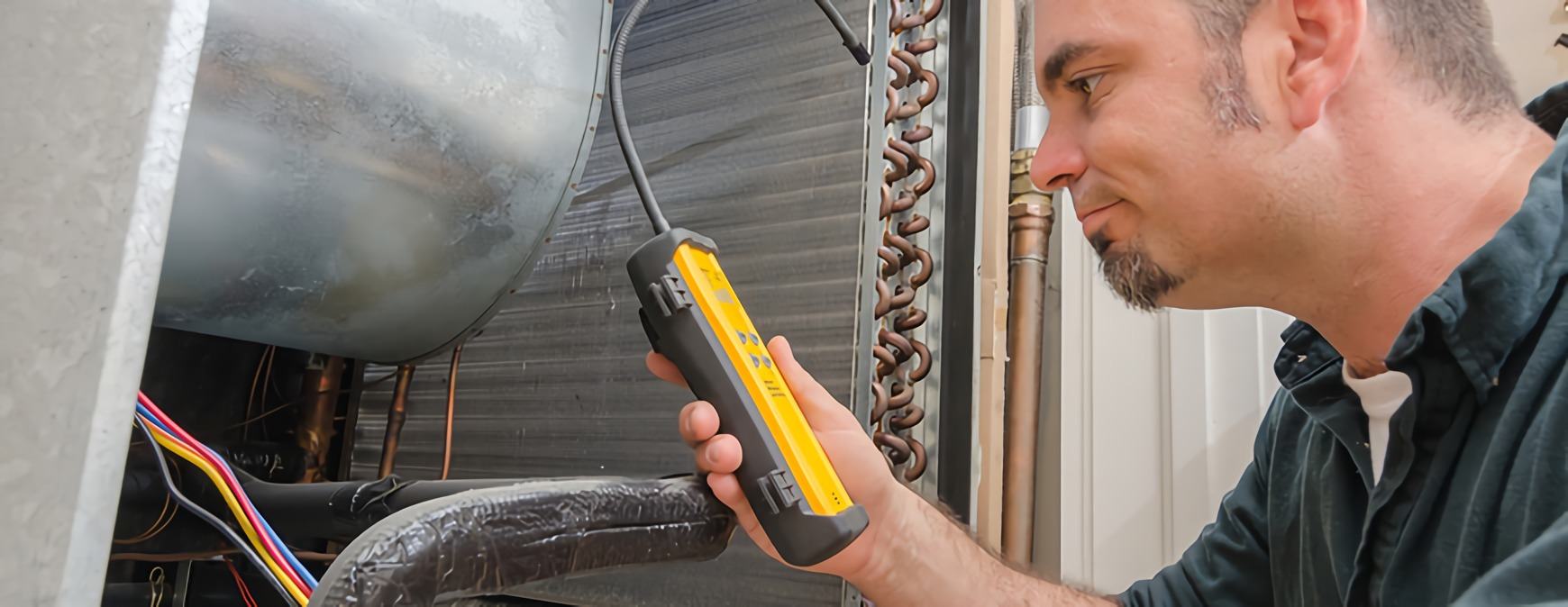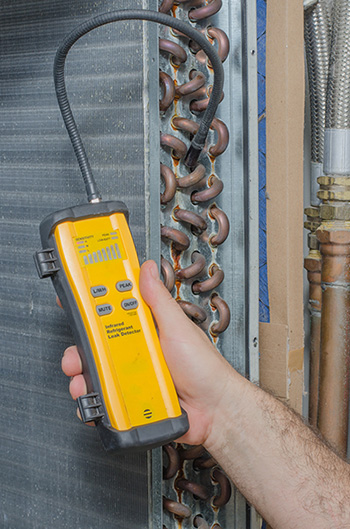
Refrigerant leaks can be very frustrating. Imagine, in the middle of a heat wave, the refrigeration system stops working because it is low on refrigerant. For businesses that rely on cooling, like supermarkets or data centers, this may have major consequences. Yet, even if it doesn’t lead to a complete outage, refrigerant leakage can have a big economic and ecological impact.
For example, a hypothetical supermarket chain that uses a total of 3,500 pounds of refrigerant and has a leakage rate of 20% would produce 700 pounds of leaked refrigerant. This is not only costly to the store chain, but directly impacts the climate resulting in the emission of 124,500 metric tons of CO2 (approximate equivalent of 24,000 cars or 10,600 homes). 1
It is essential that Refrigeration training students know about refrigerant leak causes, detection methods, and sealing methods.
What happens when refrigerant leaks?
Modern HVAC systems are designed to still work at full capacity even though there is a small leak. However, if the leak isn’t fixed in time, the system’s energy efficiency will likely be affected, and the system could break down entirely. This could create a very hazardous situation in environments where temperature control is essential for safety, like hospitals.
What causes refrigerant leaks?
The EPA 2 reports that leaks are found in a system’s racks, cases, and condensers. It is important to know where to check for leaks, so as to locate them quickly and prevent greater damage. The most common causes for refrigerant leaks are:
- Vibration
- Corrosion
- Flare nuts
- Valve fittings
- Thermal stress
- Improper installation techniques
Get Started on the Path to a New Career
Fill out our form to learn how we can help you change your life.
Refrigerant leak detection

There are different ways to detect a refrigerant leak. Some are more involved than others, yet they also tend to be more reliable. Following are some effective methods for leak detection:
- Installing electronic refrigerant leak detector that sets of an alarm.
- Injecting ultraviolet dye into system, which exposes leaks via ultraviolet light.
- Looking for oil on or near refrigerant lines.
- Listening for the leak if environment is completely quiet.
- Leaving a little bit of refrigerant in system and pressurizing it with nitrogen.
Sealing refrigerant leaks
Once the leak is found, there are several steps to fixing it:
- The leak is repaired using oxyacetylene and silver soldering.
- In some cases, the part with the leak needs to be replaced.
- Refrigeration system is evacuated and repressurized with nitrogen.
- Gauges should be checked to ensure there are not more leaks.
- Refrigerant is injected into system. 3
Finally: monitoring leaks
To avoid further refrigerant leaks, monitor the refrigeration system closely. There are active, passive, and indirect monitoring technologies. Active systems have tubing that extends to areas where leaks occur and a pump to pull in air, so they can identify leaks and notify the consumer. Passive systems work similarly but use sensors and electrical wiring instead of tubing and a pump. Indirect systems make use of existing sensors by analyzing the data and searching for unusual values. A good idea is to employ a combination of all three methods to prevent refrigerant leakage in the future.
Additional Sources
1 – http://www.achrnews.com/articles/134831-beat-leaks-with-detection-notification-and-monitoring
2 – https://www.epa.gov/sites/production/files/documents/RealZeroIllustratedGuideto13CommonLeaks.pdf
3 – https://highperformancehvac.com/fixing-refrigerant-leak/
This blog has been labeled as archived as it may no longer contain the most up-to-date data. For a list of all current blog posts, please visit our blog homepage at https://www.rsi.edu/blog/

